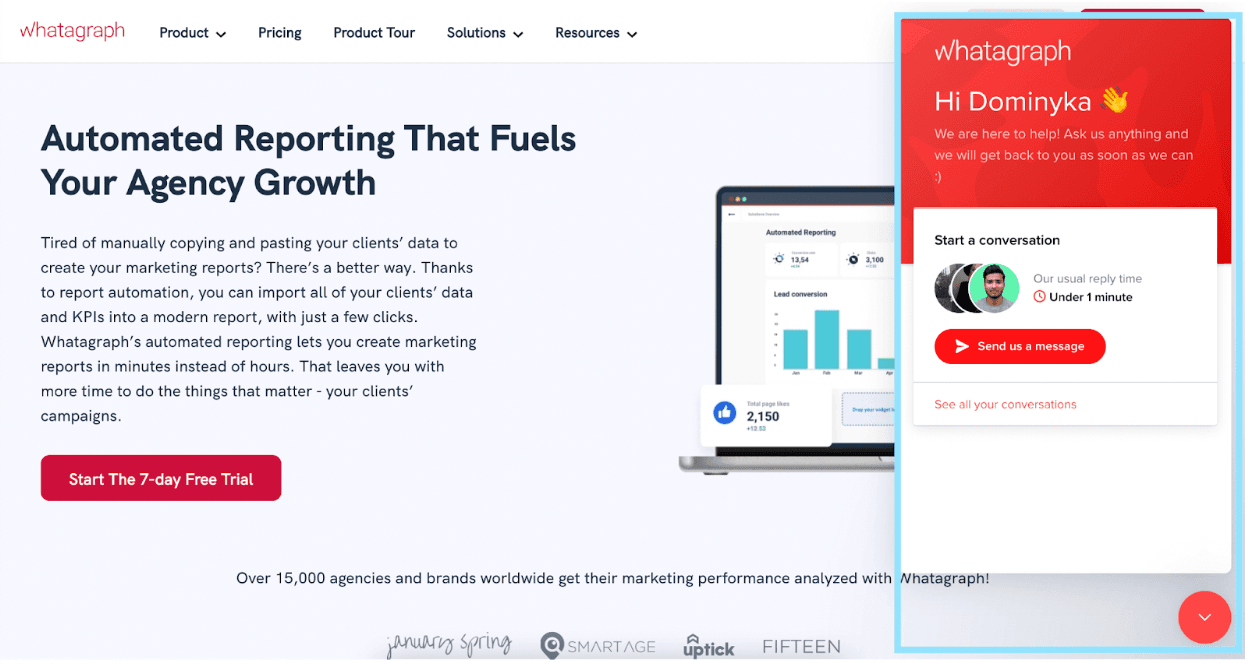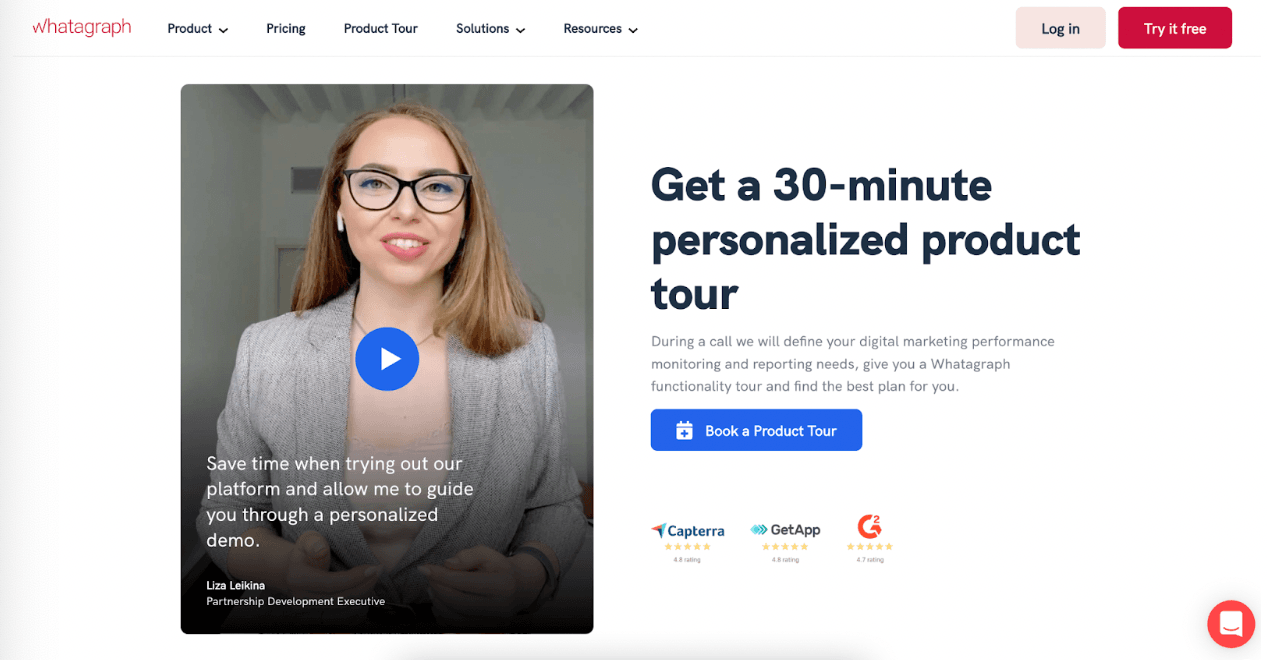Client Onboarding: How to Do It Right (+ 4 Best Practices)
Want to increase client retention but don’t know where to start? Begin by addressing and re-evaluating the very first days of your relationship with them - the client onboarding. To do that, here is a guide and best practices for welcoming new prospects to your company.

Oct 26 2022●7 min read

- What Is Client Onboarding?
- Why Is The Client Onboarding Process Important?
- How to Structure an Onboarding Process for Your Clients
- Preboarding
- 1. Best Practices For Preboarding
- Discovery Call
- 2. Best Practices For Discovery Call
- Signing the Proposal and Contract
- 3. Best Practices For Signing the Contract
- Kick-off Call to Create a Plan
- 4. Best Practices For the Kick-off Call
- Content that Can Help with Onboarding
- Bottom Line
What Is Client Onboarding?
Client onboarding is the process of introducing new clients to your business. It includes guiding them through the first steps, setting expectations, and addressing their concerns. The goal is to set up a smooth working relationship that will lead to successful service or product delivery.
Some companies may think that if the client has already purchased their services or products, a client is happy with their decision and they don’t need any further hand-holding. Or even worse, that they can automate the onboarding workflow.
However, if you run a SaaS company, provide marketing services or a product that is not easy to understand, and if you want to show best practices and demonstrate how your product could bring value - you need to develop a personalized and professional client onboarding strategy.
Why Is The Client Onboarding Process Important?
The onboarding process is important for two parties: the marketing agency and the client.
For the agency, a great established onboarding process has the potential to double customer lifetime value; increase customer retention by 5%, which then increases profits by up to 25% to 95%) and, if you are lucky, convert some of those clients into loyal, happy brand ambassadors.
You can also stand out from the crowd by providing a top/excellent/personalized onboarding experience. People no longer simply purchase a product or a service. According to statistics, 80% of people are willing to pay more if they feel valued and, more importantly, wanted.
Additionally, you can improve your Net Promoter Score or NPS. This metric assesses the probability of clients recommending your product or service to others on a scale of 1 to 10.
Ask follow-up questions about your current onboarding processes. This will ensure that your practices are modern. Moreover, you’ll know that they actually help clients and that you provide the best customer experience.
Send an NPS survey after the onboarding process is complete to determine areas for improvement.
Moreover, you can improve your customer health score.
Simply put, a customer health score determines whether a customer is likely to churn, stay or upgrade to a higher plan.
To find out your company’s customer health score, take a look at these metrics:
- Overall product usage;
- Monthly feature usage (how frequently they check in);
- Growth of the account (upgrades);
- Last seen period (how long has it been since the last login);
- Product feedback metrics (like NPS).
Start a trust-based company relationship.
Onboarding is the time to begin developing a strong and trusting client relationship. Gather and prepare all the information required to provide the most personalized onboarding experience possible. Create a roadmap and content that is appropriate for that specific customer or client. Show them useful tips and tricks, use cases, and best practices for that client's needs and goals (which is also something you need to find out).
Ensure your clients are educated, prepared, and engaged. By doing this, you show your client you know about them and their needs; you care about the client’s goals; and you want to help them achieve them.
For the client, the onboarding process is a time for them to learn how to use the product, explain their needs and goals to the customer support team members, and see how the product can help them in the most efficient way.
This is the timeframe when 62% of customers will decide and evaluate whether or not they will use your product or service in the long run.
How to Structure an Onboarding Process for Your Clients
Now that you are familiar with the stats and benefits of proper client onboarding, here is a step-by-step guide to successfully onboarding new clients:
- Preboarding
- Discovery Call
- Signing the Proposal and Contract
- Kick-off Call to Create a Plan
- Scheduling Regular Update Calls
Let’s cover each of them in detail.
Preboarding
The customer journey is divided into five stages or milestones: awareness, consideration, purchase, retention, and advocacy.
The preboarding process includes awareness and consideration and is the first point of the contact stage.
Companies address customer needs, list their benefits, and offer solutions to their problems during this time.
Pre-onboarding is also a good time to identify new customers’ pain points, define big-picture campaign goals, agree on multiple deliverables, and collect the necessary information.
1. Best Practices For Preboarding
Provide high-quality articles and blog posts. Learn about target audiences' major general issues. Write and create educational content that answers that intent. Use client reporting tools to get current data on the performance of your content and optimize accordingly.
Create videos. Give a glimpse of your product or service. Showcase your best features. Provide how-to content.
Build a community around your brand on social media. However, keep in mind that it is difficult to achieve because it requires a lot of imagination, quirkiness, and a dedicated person to oversee all channels, talk to people, and, ultimately, succeed.
Try to use a distinct style to highlight your product and find ways to differentiate yourself from the competition.
Discovery Call
A discovery call is a very first interaction and conversation an agency has with a client who showed interest in a product or service.
This is where the agency learns about the client's specific pain points, and ideal goals, and set expectations for your services.
This is when an agency tries to close the deal.
2. Best Practices For Discovery Call
Find out more about the prospect. Find out what kind of business they run, if any. What is their professional background, demographics, and so on, is. Essentially, you want to gather the information that will be useful when creating questions for prospects and to differentiate yourself from competitors by speaking their ‘language’.
Be transparent. Be open and honest. You may feel compelled to pitch your company as the only one capable of resolving their problems. Exaggerating your abilities, on the other hand, may do you more harm than good. Furthermore, more than 90% of those polled say they would stick with a transparent brand. Be specific about what you can and cannot do. Don't make unrealistic promises.
Have solid product/service knowledge, explain how it works and offer different pricing models according to specific needs. Be prepared to answer questions about any features, terms, etc.
Describe how each feature of your product or service works and how it benefits the prospect. Draw a picture of what the prospect might expect in the future if they use your tool or service.
Signing the Proposal and Contract
Have you successfully completed the sales process and closed the deal with a new client? It's time to formalize the agreement.
The contract sets clear requirements for what you will achieve, eliminates misunderstanding, and ensures that both parties are satisfied with the arrangement.
Include the contract in your welcome email. Provide the client with a warm welcome and any necessary preliminary details.
3. Best Practices For Signing the Contract
- Include the tasks and deliverables you will provide to your client.
- Clearly state the timelines (how frequently you will deliver those deliverables);
- Indicate the length of your agreement;
- Include termination terms (if applicable to your agency) indicating how many days in advance the client should notify you that they wish to terminate the contract.
- Include any terms and conditions that apply.
- Include the service fees and terms.
Kick-off Call to Create a Plan
Last on the client onboarding checklist is a kick-off call or a meeting.
The client kick-off call is an opportunity to shine and set the tone for future collaboration. It is for you and your client to start the relationship on the right foot.
It serves a variety of functions and enables consultants and customer success teams to:
- Establish client’s expectations;
- Open communication channels;
- Build trust in your team's expertise;
- Respond to any preliminary inquiries;
- Introduce your group to the client's group and set the right course for project management;
- Describe your approach and how you work.
A kick-off call or meeting is a discussion between key stakeholders to ensure that everyone is on the same page. During this call, you can develop a marketing (sales, etc.) strategy as well as a priority list. The kick-off call is an extension of the marketing (sales) funnel in which you reaffirm the objectives that were discovered and agreed upon during the sales process.
4. Best Practices For the Kick-off Call
HubSpot recommends sending an email for the kickoff process within 24 hours of signing the contract. You should provide contact information of your agency’s stakeholders and when and under what conditions clients can contact them.
Before the call, make sure to outline the vision, expected results and purpose. You should also determine expectations YOU have from the client and ways you’ll measure performance deliverables.
Discuss the methods for identifying, tracking, and managing risks and changes.
Decide how frequently meetings will be held, when and how they will be held, and who will attend. Make a note of when and how progress updates will be distributed.
Allow time for questions and concerns.
Reiterate anything agreed upon, as well as any action items. Thank everyone for coming, and then adjourn the meeting.
Agree on the point of contact from your team - usually a dedicated account manager. This helps streamline the communication process.
Content that Can Help with Onboarding
You can also create extra materials to help you with onboarding, making the experience more interactive, engaging and modern.
Quick Product Introduction Videos
Product videos are an excellent addition to your onboarding or pre-boarding process. It's especially useful when prospects don't want to jump on the call before learning more about the product you sell.
Almost 70% of customers prefer to learn about a product or service by watching a video, and more than 90% of marketers claim that videos help increase user understanding of their product or service.
As can be seen, making a video benefits both parties.
For example:
Live Chats
In-app chat for answering questions or contacting any customer support team member for a live chat. While it is not the end-all client onboarding software, it does help.
For the marketing agency, having a live chat customer service available throughout the day saves time and money; reduces people-to-people interactions (which also saves time) and humanizes your brand. Live chat software delivers 73% customer satisfaction, compared to 61% for email and 44% for phone support.
For the client, live chats offer smoother and quicker customer journeys, which is what all clients want. So, if you want to have happy and satisfied customers, you need a live chat. Or, in another way, always be available on your enterprise contact center. Many communication platforms and client portal software have live chat functionality allowing companies to be in constant touch with customers and solve their issues more effectively. If you are looking to elevate your professional interactions with a digital business card, this article on the best digital business cards offers valuable insights.
Here is an example of a well-performing live chat:

Demo Tours
The last essential material to offer your clients - product tours.
Product tours have become the new standard for guiding users to their "aha" moment or highlighting high-value functionalities that are frequently overlooked. By providing contextual instruction as your users interact with your service, you help them immediately spot its benefits and take the appropriate action to complete their task.
You can gain extra points from your clients if you offer them personalized product tours. They could even simplify user customer onboarding process with utilizing customer onboarding software.
Moreover, demo tours are a great way to chat with your client, and have a casual conversation while you explain and show how your services work. There’s no need to do this in person as common software like Zoom allows you to run demos in real-time through video.
Extra advice to get you prepped for a presentation:
- Prepare a script that is tailored to a specific audience. This includes reflecting on your client's unique business processes and ways your agency could directly assist them in improving them.
- Display data and appropriate graphs demonstrating how your efforts can directly relate to and impact their business. You can do so by using this white-label dashboard. It will automatically pull required data and present it in a visual and straightforward manner. Not only that, but the biggest advantage of this dashboard is what it is called - white-label. You can completely remove our branding and replace it with your own (logo, domain, theme, etc.) to appear more professional during a demo tour.
- Provide examples of use cases. It's best if they come naturally from your current clients and explain exactly how you helped them. You can find inspiration in one of ours.
Here is an example of a demo tour landing page:

Bottom Line
The client onboarding experience lays the foundation for your whole client-customer relationship. Proper onboarding practices should not only help with educating your clients but also with customer retention.
One thing to consider is post-onboarding. Once the client is onboarded, you must send data reports detailing your progress. The best way to accomplish this is through automated reporting. Send white-label data performance dashboards or reports automatically, save time, and go, onboard your next client!

WRITTEN BY
Dominyka VaičiūnaitėDominyka is a copywriter at Whatagraph with a background in product marketing and customer success. Her degree in Mass Communications/Media Studies helps her to use simple words to explain complex ideas. In addition to adding value to our landing pages, you can find her name behind numerous product releases, in-app notifications, and guides in our help center.